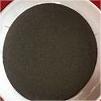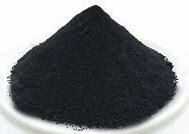High-Quality Silicon Carbide Products | Advanced Ceramic Solutions
**Silicon Carbide vs. Aluminum Oxide: Which Grit Packes the Bigger Punch?**
(is silicon carbide better than aluminum oxide)
Let’s talk abrasives. If you’ve ever sanded, ground, or polished something, you’ve probably faced the classic showdown: silicon carbide or aluminum oxide? Both are gritty workhorses, but they’re not twins. Think of them like cousins who show up to the same job site with totally different toolboxes. Which one deserves a permanent spot in your workshop? Let’s dig in.
First, meet silicon carbide. Born from sand and carbon, this synthetic material is like the ninja of abrasives. It’s harder than a diamond-themed trivia night. On the Mohs scale (which measures mineral hardness), silicon carbide scores a 9.5. That’s just shy of diamond’s perfect 10. This grit doesn’t mess around. It’s sharp, brittle, and loves to slice through hard, non-ferrous stuff like stone, glass, or even rubber. Ever seen a grinding wheel chew through concrete? Thank silicon carbide.
Now, aluminum oxide. This guy’s the old reliable. Made from bauxite ore, it’s tougher than a week-old bagel. On the Mohs scale, it’s a 9. Not as hard as silicon carbide, but don’t write it off. Aluminum oxide is like that friend who’s good at everything. It’s durable, heat-resistant, and plays nice with metals. Steel, iron, wood—it handles them all without breaking a sweat. Plus, it’s cheaper than a gas-station coffee. Most sandpapers and grinding belts? Packed with aluminum oxide.
So, which is better? It depends. Let’s break it down.
Silicon carbide shines in precision jobs. Its sharp edges make quick work of smooth surfaces. Picture sanding a car’s paint job or polishing marble. Silicon carbide cuts fast and leaves fewer scratches. But there’s a catch. Those sharp grains wear down quicker. It’s like using a brand-new pencil—super sharp at first, but it dulls fast. That means more frequent replacements.
Aluminum oxide is the marathon runner. Its grains are tougher and last longer, especially on rough materials. Grinding down a rusty metal gate? Aluminum oxide won’t quit. It also handles heat better. Friction builds up during grinding, right? Aluminum oxide disperses that heat, reducing the risk of burning your workpiece. For heavy-duty jobs on metals or hardwoods, it’s the go-to.
Cost matters too. Silicon carbide is pricier. It’s the specialty tool you pull out for specific tasks. Aluminum oxide is the budget-friendly all-rounder. If you’re sanding a deck or sharpening lawnmower blades, why pay extra for silicon carbide’s niche skills?
But wait—there’s a twist. Silicon carbide works wet. Mix it with water, and it becomes a polishing wizard. Ever seen those mirror-like finishes on granite countertops? That’s wet silicon carbide in action. Aluminum oxide? Not so much. Water just gums it up.
So, who wins? If you need speed, precision, and don’t mind swapping discs often, silicon carbide’s your hero. If you want durability, versatility, and a lighter hit on your wallet, aluminum oxide takes the crown.
Still, the best abrasive is the one that matches your project. Working on delicate ceramics or glass? Grab silicon carbide. Tackling a steel welding project? Aluminum oxide won’t let you down. Mix them up, and you’ll either waste money or ruin your workpiece.
(is silicon carbide better than aluminum oxide)
Here’s the takeaway: both abrasives rock. They just rock at different things. Your job? Know the material you’re working on, check your budget, and pick the grit that won’t back down. After all, in the battle of abrasives, there’s no one-size-fits-all champion.








